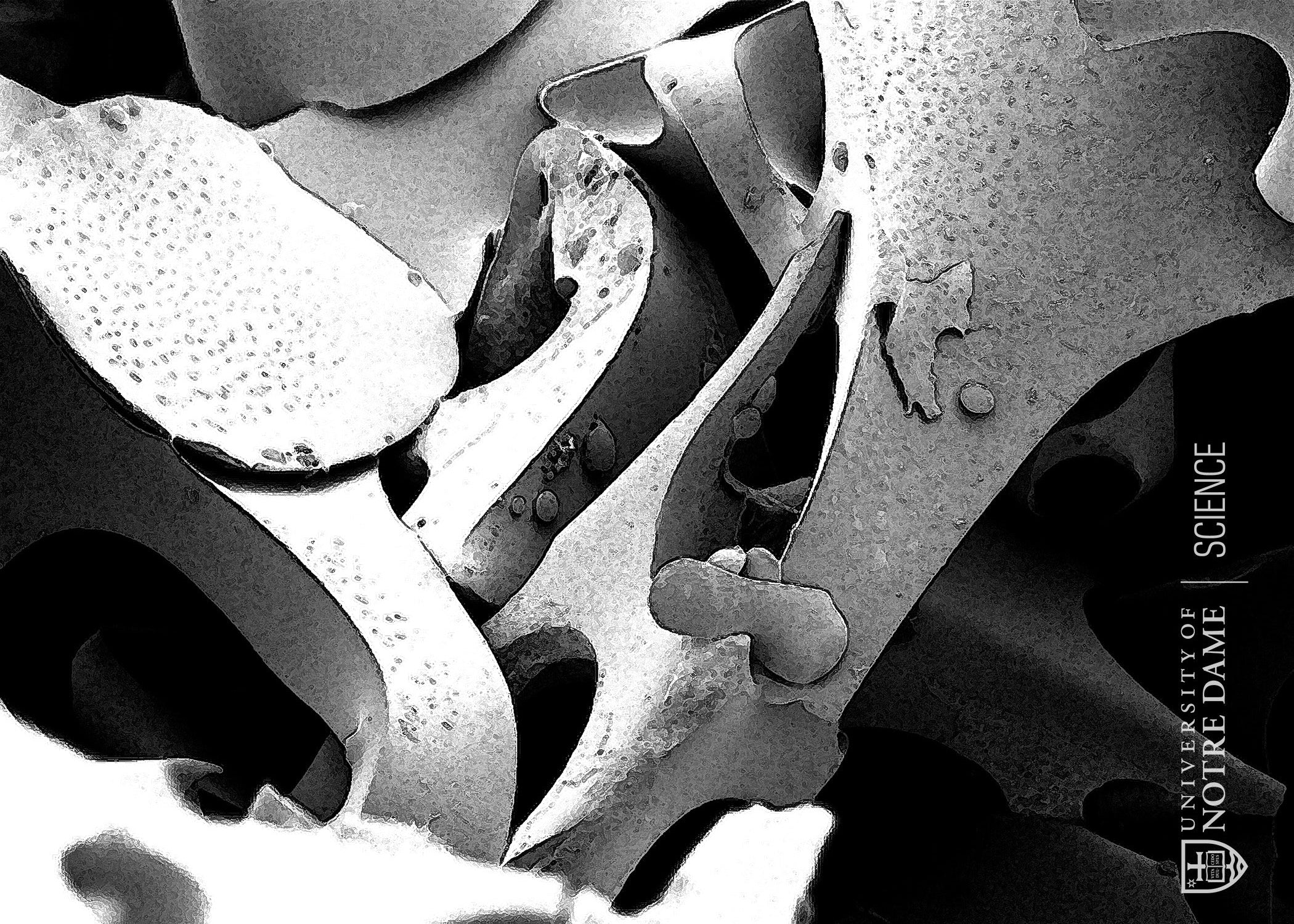




Ben Swanson, Graduate Student (Ma Laboratory), Department of Biologic and Materials Science, University of Michigan School of Dentistry
Biomaterial scaffolds can support the growth, proliferation, and differentiation of cells, with the ultimate goal of regenerating tissues and organs. Biomedical engineers are developing scaffolds with unique micro-environments that can stimulate stem cells to take on different cell fates. Poly (L-lactic acid) is a biodegradable polymer, and can be fabricated to have various surface textures and shapes. For example, the scaffold surface can be made fibrous or smooth, depending on the crystallinity of the polymer and temperature-induced phase separation. Using various combinations of scaffolds, it is possible to control the fate of mesenchymal stem cells, causing them to adopt different terminal fates, such as bone, cartilage, and adipose. Smooth scaffolds, as shown in this image, promote adipogenesis (differentiation towards fat cells). Ultimately, the microenvironment is a critical driver determining the future fate of cells and tissues; this is true in the body and now, can be mimicked by bioengineered scaffolds.
20-060



